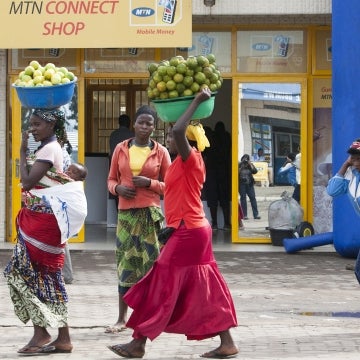As financial systems evolve, so, too, must the data and tools used for oversight. Emerging technologies are transforming supervision through Supervisory Technology (Suptech) solutions, allowing for more effective and efficient oversight with improved data quality. These innovations enable data-driven approaches with unprecedented levels of granularity and quality, deepening our understanding of financial markets. Supervisors using these tools can now track trends, assess risks, and measure financial outcomes across diverse market segments, including by gender. Sharing these insights with the financial industry, government, development partners, and investors enhances product design, oversight, and decision-making, fostering more efficient and equitable financial systems. Although this vision remains aspirational for many, countries like Rwanda are making impressive strides.
Pioneering data-driven financial inclusion policymaking
The National Bank of Rwanda (NBR) is at the forefront of the movement toward data-driven analysis and decision-making to improve oversight, transparency, and impact. In December 2023, CGAP visited Rwanda to learn from their experience, and in June 2024, both institutions co-hosted an international workshop in Kigali focused on strategies to use Supply-Side Gender Disaggregated Data (S-GDD), more effectively and widely.
Since 2008, the BNR has relied on the FinScope survey, a demand-side survey conducted every four years by Access to Finance Rwanda, NBR, and Rwanda’s Ministry of Finance and Economic Planning to measure financial inclusion. Given the limited frequency of the FinScope survey, the NBR has shifted to monitoring and analyzing financial access and usage using more frequent supply-side granular data collected at the individual level from all regulated financial service providers (FSPs).
A prominent tool in support of this new approach is the recently launched NBR Financial Inclusion Dashboard, which provides weekly updates on financial inclusion metrics using data from an Electronic Data Warehouse (EDWH). The NBR’s EDWH is a SupTech system that facilitates the collection of granular financial and non-financial data from banks, microfinance institutions, insurance companies, and payment service providers. This SupTech tool has proven to be useful not only for financial inclusion but for other supervisory roles of the NBR as well, such as prudential and consumer protection supervision.
Figure 1: NBR Financial Inclusion Dashboard interface (source: NBR’s website (accessed on March 24))
The Dashboard is valuable for policymakers, financial service providers, development partners, researchers, and any stakeholder interested in financial inclusion in Rwanda. It presents financial inclusion indicators in both data and graphic formats, addressing a longstanding demand in the sector for improved access to such information.
As shown in Figure 1, users can customize the dashboard view to explore various levels of disaggregation, including gender, age, institution type, account type, or location. Stakeholders can also access high-level financial inclusion indicators, such as the number of adults holding financial accounts, transactional accounts, savings accounts, credit accounts, and insurance policies. Additionally, they can view the different channels through which financial services are accessible, including agents, ATMs, branches, brokers, cards, internet banking, mobile banking, POS, merchants, and bancassurance.
Building a dashboard like this is no small undertaking. The NBR needed to carry out extensive staff training, development of data analytics, interdepartmental collaboration, and engagement with the industry for data validation and accuracy. Partnerships with institutions like the Alliance for Financial Inclusion (AFI), Cenfri, Access to Finance Rwanda (AFR), as well as CGAP were key in this journey.
Despite the complexity and time involved, the result has been transformative, enabling BNR to make timely, data-driven decisions moving forward, in support of gender equity in the financial sector. This success highlights the broader potential of granular data, particularly in enhancing gender-based analysis and financial oversight.
Mainstreaming gender-based analysis using granular data
The collection and use of S-GDD remains limited globally, since, unlike Rwanda, most countries either don’t collect granular data or lack integration with ID systems, making gender identification difficult and prone to errors.
In many cases, data is reported in aggregate rather than granular form, and reporting frameworks rarely require gender disaggregation. Authorities often hesitate to update reporting templates to add gender disaggregation due to uncertainty about the value of gender-based analysis to fulfill their mandates and concerns about the costs and capacity needed to manage the increased volume of data, creating a catch-22.
Given these challenges, CGAP is developing guidance to help financial supervisors collect SGDD and use it in policy and decision-making. The guidance will include recommendations on how to effectively collect and utilize SGDD, with an emphasis on granular data collection, along with compelling use cases for supervisors, policymakers, funders, and financial firms, and actionable indicators to support its implementation.
Financial authorities should champion the use of granular data and prioritize gender-based analysis
The demand for high-quality data and advanced tools to enhance effective supervision has never been more crucial. Alongside ongoing inclusion challenges, like persistent gender gaps, emerging economic and technological risks threaten to widen these gaps and undo hard-earned progress. This calls for innovative solutions.
Suptech, AI, and cloud computing are transforming the way regulators monitor financial trends and risks by enabling cost-effective granular data collection and utilization. This trend is a great catalyst for mainstreaming granular data that supports gender-based and other types of market-segmented analyses that are key to informing effective strategic decisions by regulators, supervisors, policymakers, and industry players.
A key use case for granular data in the financial sector is a gender-based analysis using regulatory SGDD to identify gaps and inform strategic decisions to close them. As authorities seek to leverage this type of data, Rwanda’s experience offers valuable insights. The National Bank of Rwanda’s implementation of real-time, gender-disaggregated data through its EDWH and its Financial Inclusion Dashboard serves as a prime example of how such innovations can foster smarter decisions, contributing to more inclusive, equitable, resilient, and sustainable financial systems. By partnering with local and global stakeholders, BNR is setting a benchmark on regulatory Supply-Side Gender Disaggregated Data adoption that benefits not only Rwandan women but the global financial sector.
CGAP and NBR continue to collaborate, committed to testing the value of additional regulatory SGDD indicators to support financial inclusion analysis and enhance other supervisory and central bank mandates, including research, consumer protection, financial stability, and sustainability.



